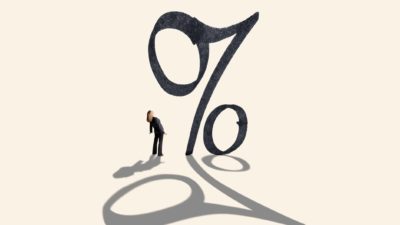The Zip Co Ltd (ASX: ZIP) share price has seen enormous falls over the past few years. It could be a mistake for beginners to invest in the buy now, pay later business.
Looking at the chart, Zip has dropped by around 95% since February 2021.
Beginners may be looking at that as a big opportunity. But, there are a number of reasons why I'd suggest caution when looking at this former market darling.
It's true that Zip is a very different business from where it was five years ago. It has expanded significantly in both the US and Australia.
But, here are some reasons why Zip shares may not rapidly rebound from here.
Forget the past Zip share price
Plenty of people have the habit of anchoring to past prices.
Just because the Zip share price was above $10 in the past doesn't mean it's going to go back to that price. The market doesn't care what price we paid for our shares, or where it was trading two years ago.
The BNPL business has seen its growth rate slow considerably. Indeed, in the first six months of FY23, the total transaction volume (TTV) only increased by 10% to $4.9 billion.
When we're thinking about what ASX shares to invest in, I think we need to think about the future, not the past.
It's a good idea for investors to stick to their 'circle of competence'. That means only investing in what we know so that the investment is easy to understand and we can understand the progress that business is making (or isn't making).
Higher interest rates
One of the key expense categories for Zip is the interest expense.
Interest rates have shot higher in Australia and the US, so it seems like the BNPL business is going to be paying quite a bit more for its borrowing going forwards.
I think this really changes the economic picture for Zip because it's borrowing money to then fund customers' spending until they repay it.
Higher interest rates could also mean that customers may be more likely to get into arrears.
I think Zip shares could get a one-off boost if interest rates were to drop, but I don't think the RBA interest rate will go back to below 2% once inflation has normalised.
Retreating from global markets
One of the things that can justify a higher share price is the potential growth that the business can achieve.
Zip was targeting many regions for growth, but it has stepped back from a number of those markets. While this move is accelerating its journey towards breakeven, it has reduced the growth runway of the business.
Last month, the business announced its plans to divest its Central and Eastern European business called Twisto and the South African business Payflex. It's also in the process of winding down its business in the Middle East.
However, thanks to this, it's expecting to deliver positive group cash earnings before tax, depreciation and amortisation (EBTDA) during the first half of FY24.
Foolish takeaway
Zip may still be able to produce profit from here, but I think it would be a mistake for beginner investors to think that it's going to recover back to $10, or even $5, any time soon. Regulation is also a potential worry, but that's still a developing situation.









